Have you noticed strange mud tubes or damage on your wooden furniture or walls? It might be termites! These tiny pests may be small, but they can cause serious damage.
In this article, we will guide you how to identify a termite infestation, the causes behind their presence, and how to get rid of termites effectively.
All About Termites
Termites have the ability to destroy entire buildings. They are known for eating wood and other cellulose-based materials, which can cause severe damage to the foundations of homes and buildings.
Although termites may resemble ants, they have distinct physical features such as straight antennae, thick waists, and unified wings. These characteristics help them break down cellulose, making them a major threat to any wooden structure they come across.

But don’t worry—there are ways to deal with these troublesome insects. It’s essential to understand how to identify termites and their behavior in order to effectively control and prevent infestations. So, let’s dive deeper into the world of termites and discover what makes them such a serious threat to our homes—and how to eliminate them permanently.
Termite Behavior
We can learn more about termite behavior through the following aspects:
- Colonies: Termites live in large colonies that can be counted in the thousands or even millions.
- Organized Structure: Termites have a well-defined structure within their colonies. They are social insects with a king, queen, and different castes, each with a specific role.
- Communication: They communicate with one another through chemical signals, which help coordinate tasks such as foraging and defending the colony.
- Reproduction: Winged reproductive termites leave the colony to mate and start new colonies, usually in spring or early summer.
- Attracted to Cellulose-Based Materials: Termites are drawn to cellulose materials like wood, paper, and plants. They dig narrow tunnels through wood as they feed.
What Are the Types of Termites?
There are around 250 species of termites, with approximately 220 species found in India. However, not all termite species are considered harmful.
Termites are generally classified into three main types: subterranean termites, drywood termites, and damp wood termites. Each type has its own unique characteristics and behavior, so understanding the differences is essential for identifying the type and effectively controlling the infestation.
- Subterranean Termites: It is the most common type in Jordan. They live in underground colonies and build mud tubes to reach food sources. These termites can cause severe structural damage to buildings.
- Drywood Termites: These termites live inside dry wood and do not require a contact with soil. They can be hard to detect because they don’t create mud tubes and can infest wooden structures for years without being noticed.
- Damp wood Termites: These termites live in moist and are commonly found in coastal areas. They require high humidity levels, and infestations typically occur in outdoor structures like roofs and fences.
The Harmful Effects of a Termite Infestation
A termite infestation poses a major threat and is considered one of the most serious pest problems today. Below are the harmful effects of termite infestation:
- Structural Damage: Termites feed on cellulose-based materials like wood, paper, and cardboard. Over time, termite damage can weaken foundations, walls, and ceilings, compromising the safety of wooden structures and damaging furniture. This often results in costly repairs.
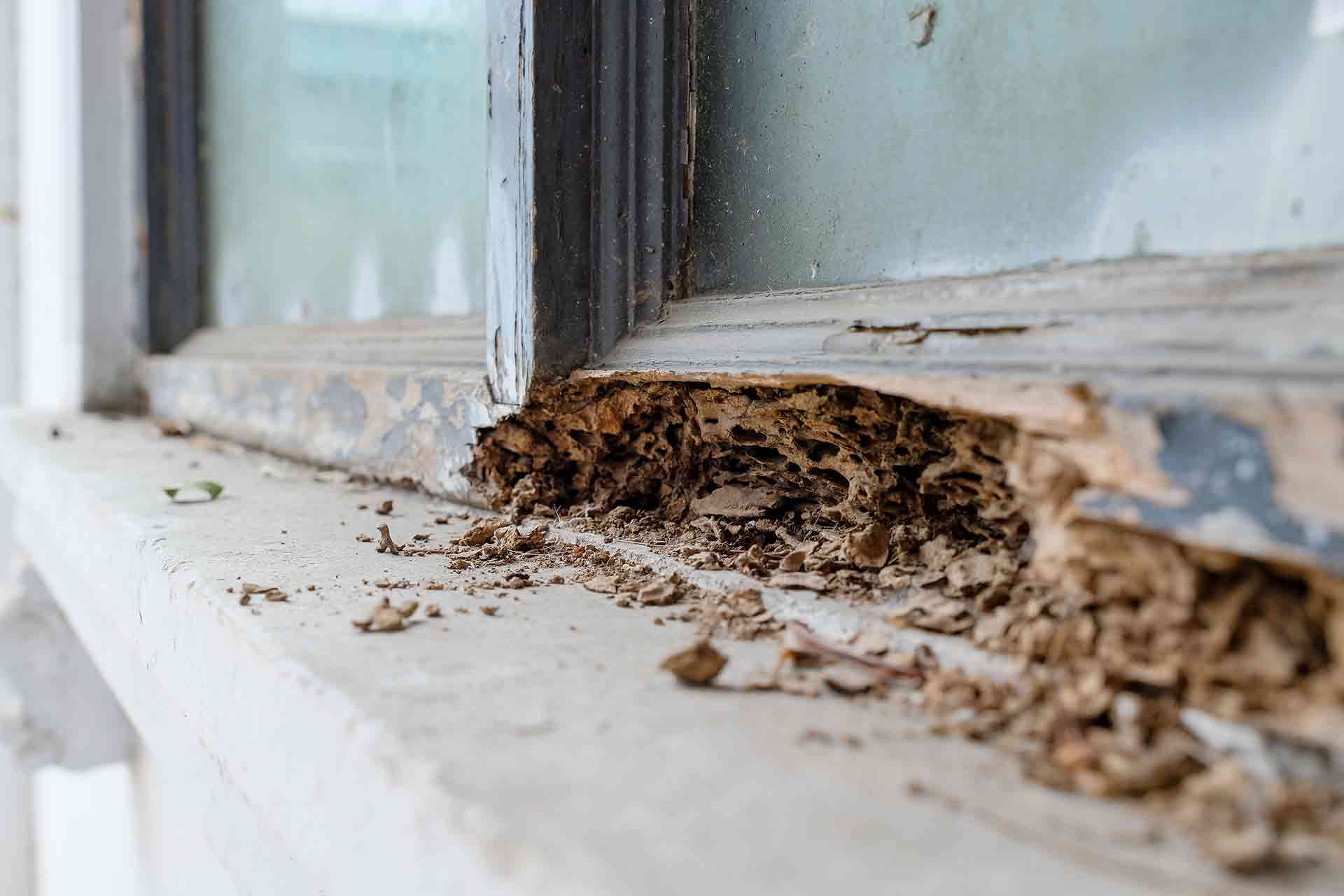
- Health Risks: Termite droppings and shed wings can trigger allergic reactions for some people, causing symptoms like sneezing, coughing, and skin irritation. Additionally, termite activity can increase moisture levels, increasing mold growth and worsening respiratory issues.
- Financial Loss: Repairing termite damage can be very expensive, especially if the infestation is left untreated for a long period.
- Impact on Property Value: A termite infestation can significantly reduce property value, making it more difficult to sell or rent the property.
What Are the Signs of a Termite Infestation ?
Termites are known for causing serious damage to buildings. Early detection is essential to avoid costly repairs. Here are some common signs of a termite infestation to look out for:
- Visible Mud Tubes: Subterranean termites build mud tubes to travel from their colony to food sources. These tubes are often found along a building’s foundation and indicate active infestation.
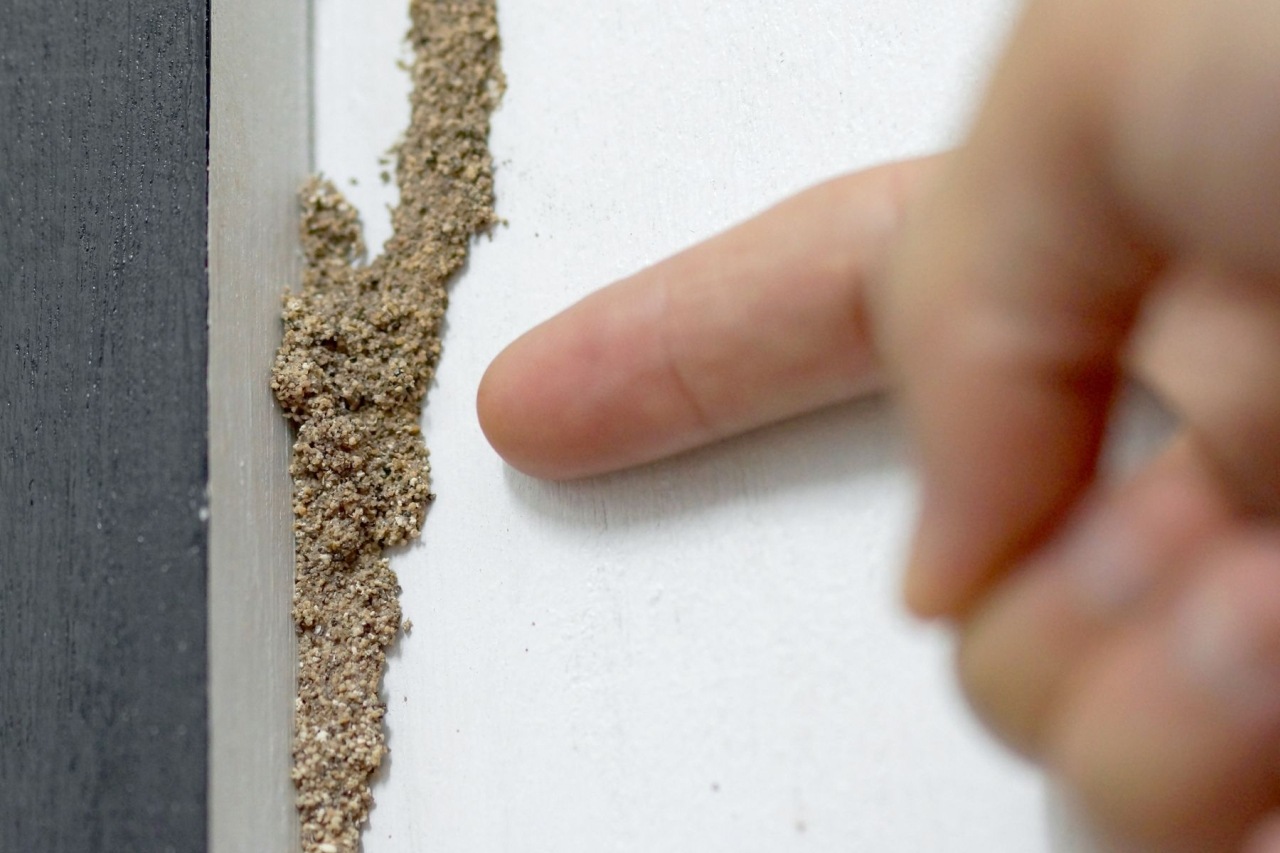
- Shedded Wings: Termite swarms occur at specific times of the year. After mating, termites shed their wings. Piles of shedded wings could indicate a nearby termite colony.

- Hollow-Sounding Wood: Termites tunnel through wood, weakening its structure and leaving it hollow. If you tap on wooden structures and hear a hollow sound, it may be a sign of termite damage.
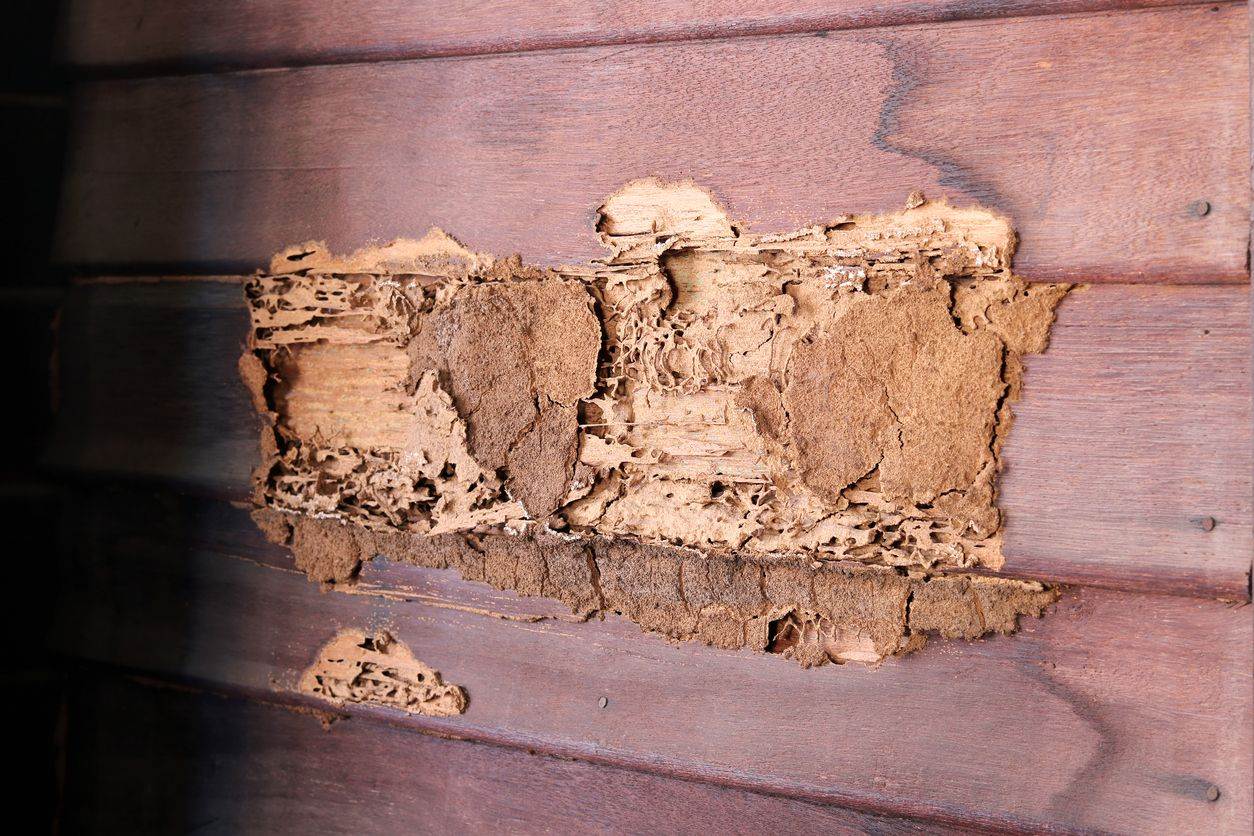
- Cracked or Bubbling Paint: As termites create tunnels, they release moisture, which can cause paint to bubble or crack.

- Droppings: Drywood termites leave behind small, pellet-like droppings called frass. Finding small piles of these near wooden structures may indicate an infestation.
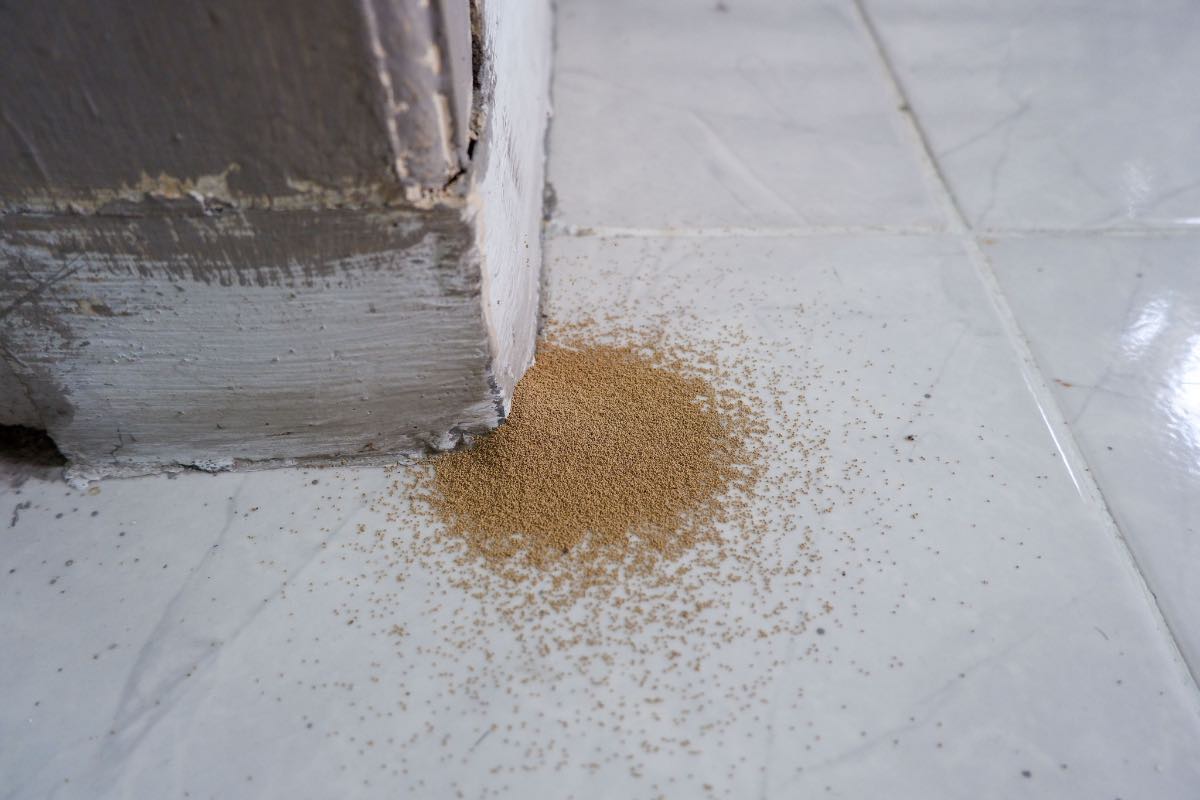
- Swarming Termites: If you notice a swarm of winged insects around your property, it could be a sign of a termite infestation.
It’s important to note that termite infestations can be difficult to detect, and not all signs are obvious. Regular inspections by a professional termite control company can help detect early infestations and prevent severe damage.
Common Causes of Termite Infestation
Termite infestations can result from several environmental and structural conditions. Understanding these risk factors can help property owners implement preventive measures to protect their homes and businesses.
- Moisture Issues: Termites thrive in moist environments. Leaking pipes, standing water, poor drainage, and excess humidity create ideal conditions for termite activity. Subterranean termites, in particular, are drawn to moisture-rich areas, making consistent moisture control essential in any integrated pest management plan.
- Wood-to-Soil Contact: Direct contact between wooden structures and soil provides an easy access point for subterranean termites. This setup allows termites to build mud tubes and travel between their underground colonies and their food sources undetected.
- Stacked Wood or Tree Debris: Firewood piles, wooden planks, or fallen tree stumps around a property serve as a food source and shelter for termites. These areas become infestation hotspots, increasing the risk of termites migrating to nearby structures.
- Structural Deficiencies: Cracks in foundations, gaps around plumbing, roof leaks, and other structural vulnerabilities can offer termites entry points. Unsealed utility lines and drainage pipes are often overlooked but provide critical access routes for these pests.
- Geographic Location: Certain regions are naturally more prone to termite infestations. Areas with warm, humid climates and heavy rainfall are particularly susceptible, making proactive termite protection even more important.
How to Get Rid of Termites Permanently
Effective termite control requires a comprehensive strategy that includes accurate species identification, targeted treatment solutions, and long-term prevention. Here's a breakdown of key steps to successfully eradicate termites:
termite treatment amman jordan
Step 1: Inspect and Monitor High-Risk Areas
- Flooring: Raised or damaged wooden floorboards and visible mud tubes where the wall meets the floor are signs of infestation.
- Storage Rooms: Infrequently accessed storage areas, especially with cluttered corners, provide safe nesting sites for termites.
- Plumbing & Drainage: Termites are attracted to high-moisture zones around leaking or poorly insulated pipes.
- Exterior Walls: Mud tubes may be visible on outer surfaces as termites infiltrate your property.
- Outdoor Areas: Termites may nest within unused construction materials, stacked wood, or even rotting tree stumps in gardens.
- Wooden Doors & Windows: Termites often infest wooden frames. Look for mud tubes, exit holes, or frass (termite droppings) when cleaning or maintaining doors and windows.
Termite Exterminator
Identifying the Type of Termite
Before choosing a termite treatment strategy, it’s critical to first identify the species of termite infesting your property. Termites are generally classified into three main types:
Drywood Termites, Damp wood Termites, and Subterranean Termites.
Each type has unique behavioral patterns and nesting preferences, requiring different treatment approaches. Accurate identification ensures that the chosen treatment is both effective and long-lasting.
termiticides
Chemical Termite Treatment
Chemical termite treatments remain one of the most widely used and highly effective methods for termite control. These involve the application of professional-grade termiticides designed to eliminate active colonies and prevent reinfestation. However, it's essential to follow safety precautions and consult licensed professionals to ensure safe application.
- Soil Treatment (Barrier Application): Applying liquid termiticides—such as Imidacloprid or Fipronil—to the soil surrounding a property creates a chemical barrier that termites cannot cross. This is especially effective against subterranean termites.

- Direct Wood Treatment: If termites are found inside wooden structures, the affected areas can be directly treated with wood-preservative termiticides to eliminate the infestation and prevent further damage.

- Termite Baiting Systems: Strategically placed termite bait stations contain slow-acting insecticides. Termites carry the bait back to the colony, resulting in colony-wide elimination over time. This is a preferred low-impact solution for sensitive environments.
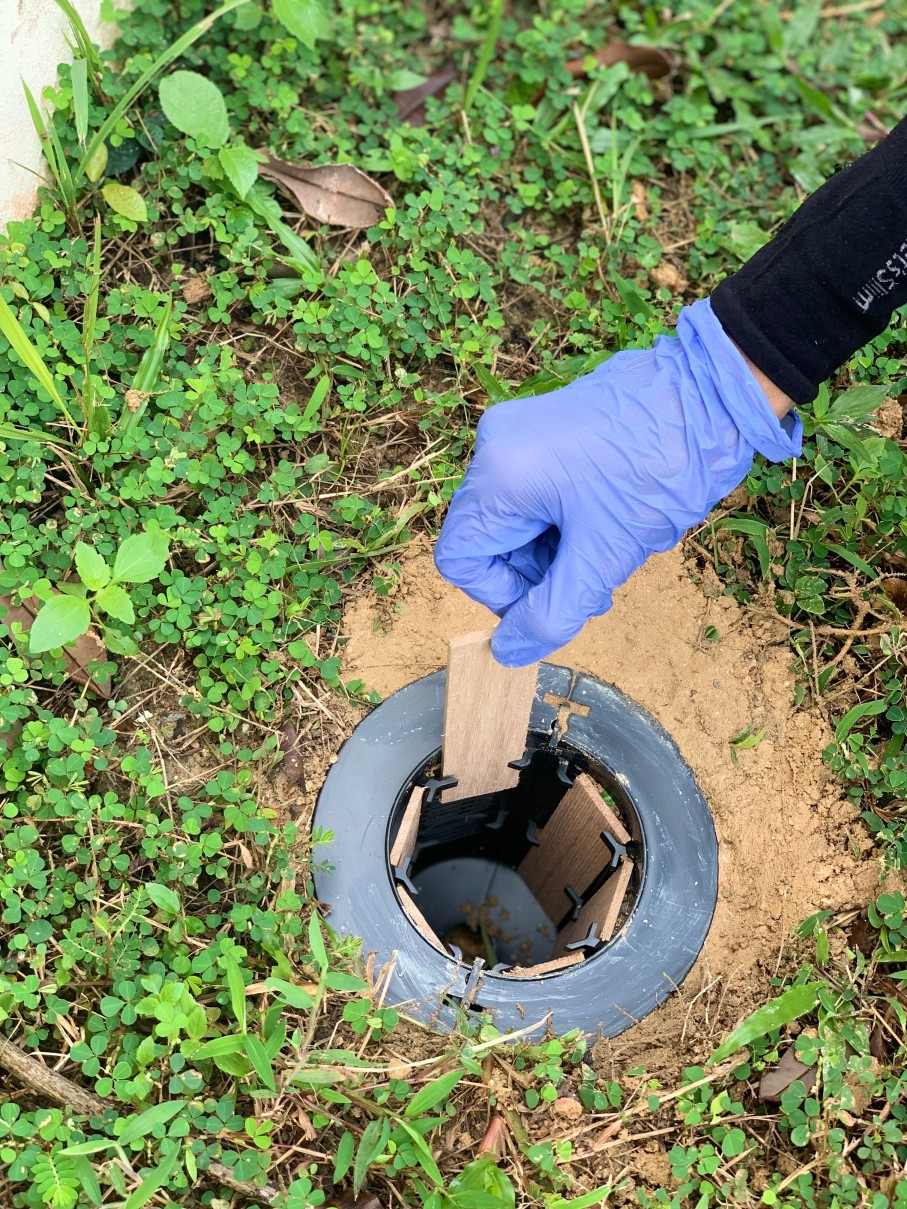
- Foam and Dust Treatments: Foam termiticides are ideal for wall voids and other hard-to-reach areas where liquid treatments are not practical. Dust formulations (powders) can also be applied in areas inaccessible to liquids or foam.
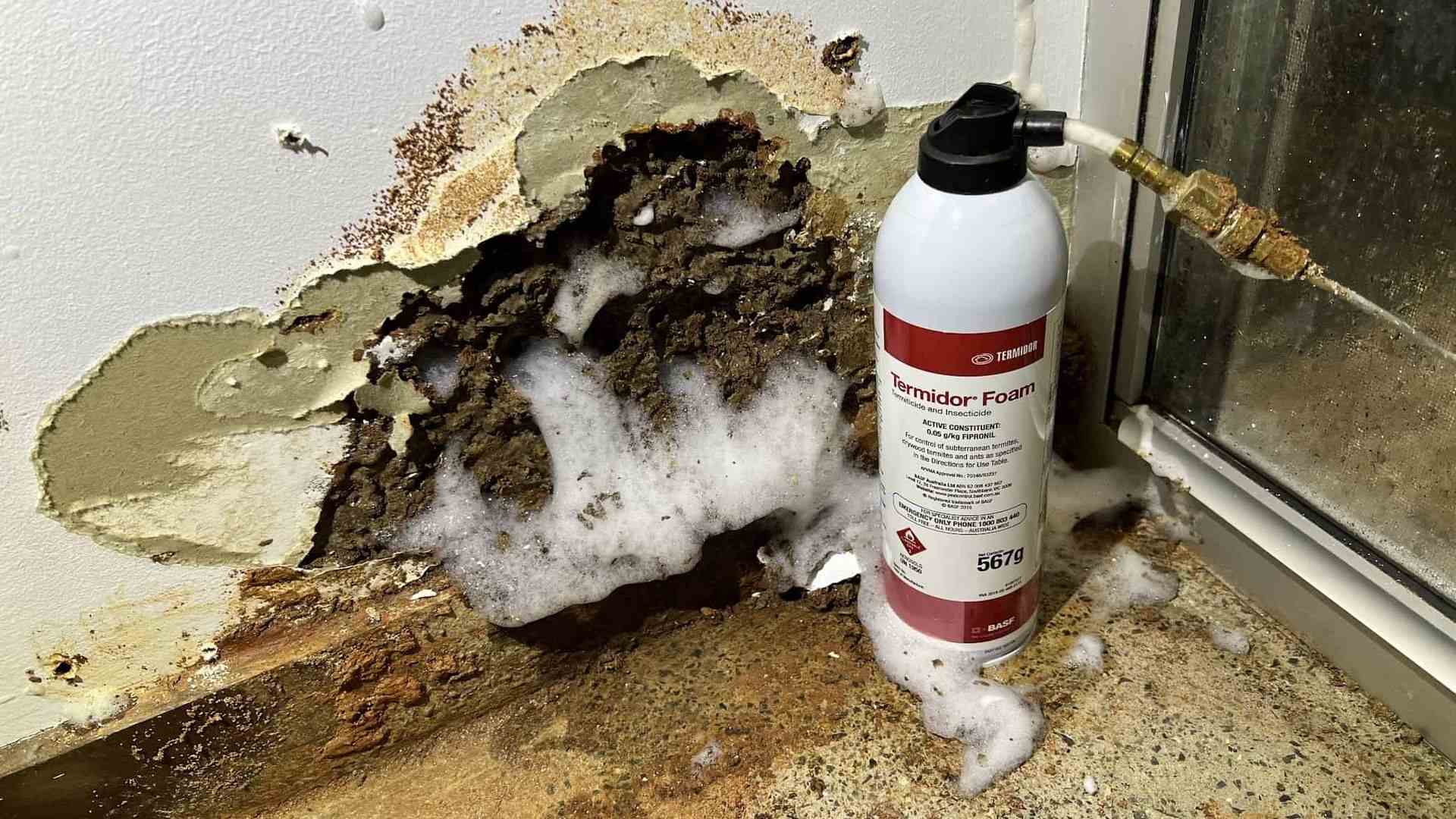
- Heat Treatment (Thermal Remediation): A chemical-free, eco-friendly option that involves heating the infested area to a temperature lethal to termites. Though more costly and typically performed by professionals, heat treatment is especially effective for drywood and subterranean termite infestations.
Termite infestation
Natural Termite Control Remedies
While not as effective as professional treatments, natural termite control methods may help reduce activity in minor infestations or serve as supplementary prevention:
- Orange Oil: Contains d-limonene, a natural compound toxic to termites—effective mainly against drywood termites.
- White Vinegar: Acts as a mild repellent. Mix equal parts vinegar and water and spray on wooden surfaces.
- Borax (Sodium Borate): A naturally occurring mineral that can be mixed into a paste and applied to infested wood.
- Diatomaceous Earth: A natural powder made from fossilized aquatic organisms. When applied to wood surfaces, it can damage termite exoskeletons and dehydrate them.
Bash Services
Preventive Measures for Long-Term Termite Protection
Preventing future termite infestations is just as important as eliminating an active colony. Below are key preventive steps every property owner should consider to ensure long-lasting protection:
- Routine Termite Inspections: Schedule regular inspections by licensed termite control professionals to detect signs of infestation early, before significant damage occurs.
- Remove Wood-to-Ground Contact & Debris: Eliminate wood piles, and tree stumps near your home, as these serve as both food sources and nesting grounds for termites.
- Improve Property Ventilation: Ensure that your spaces, basements, and storage areas are properly ventilated to reduce moisture buildup—a key attractant for termites.
- Soil Treatment Barriers: Applying a preventive chemical soil barrier is one of the most effective ways to block termites from entering your property. This proactive treatment creates long-term protection against subterranean termites.
Contact a Termite Control Company In Amman Jordan
Successfully eliminating and preventing termite infestations requires expertise, precision, and right equipment. If you suspect termite activity in your home or business, the best course of action is to consult a professional.
At Bash Services, our certified pest control engineers in Amman, Jordan, are highly trained in termite detection, species identification, and advanced treatment techniques tailored to your property type. Contact us at 0770277555.

